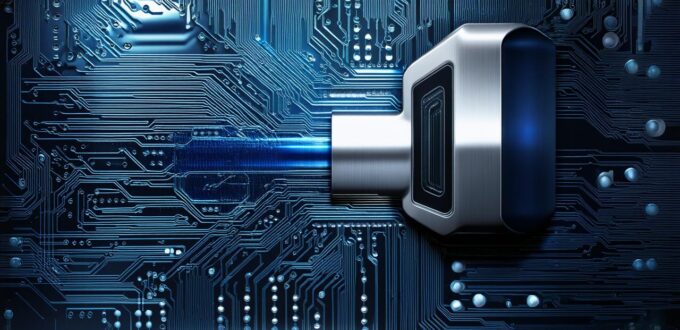Introduction
Software development is an ever-evolving field with new technologies and tools emerging all the time. One of the most important concepts in software development is understanding the difference between programs and software. While they may seem similar at first glance, there are several key distinctions that set them apart. In this comprehensive guide, we will explore what sets programs apart from software and provide real-life examples to illustrate these points.
Programs vs Software: A Definitive Overview
A program is a set of instructions written in a programming language that tells the computer how to perform a specific task or set of tasks. Programs are typically used to automate repetitive tasks, such as data entry or report generation, and can be run multiple times with different inputs.
On the other hand, software refers to a complete application that includes all the necessary components, such as the user interface, database, and logic, to perform a specific function or set of functions. Software is designed to be used by end-users and typically requires some level of configuration or customization before it can be fully utilized.
Understanding the Differences: Use Cases and Examples
To better understand the differences between programs and software, let’s look at a few real-life examples.
Example 1: Word Processor Software
Microsoft Word is an example of software that includes all the necessary components to perform the function of word processing. When you open Microsoft Word, you are presented with a user interface that allows you to create and edit documents. The software includes features such as formatting tools, spell check, and templates to help you create professional-looking documents.
In contrast, a program like AutoCorrect is a separate program that performs a specific task within the Microsoft Word application. AutoCorrect is designed to automatically correct spelling errors as you type, saving you time and reducing the likelihood of making mistakes.
Example 2: Database Management Software
Another example of software is database management systems like MySQL or Oracle. These programs are designed to manage and organize data, allowing users to create and manipulate databases, run queries, and generate reports.
In contrast, a program like phpMyAdmin is a separate program that performs specific tasks within the MySQL database management system. PhpMyAdmin allows users to interact with the MySQL database through a graphical user interface, making it easier to manage and manipulate data.
Example 3: Operating Systems Software
Operating systems like Windows or macOS are examples of software that manage the computer’s hardware and provide a platform for running other applications. These programs include features such as file management, user interfaces, and security protocols to ensure that the computer runs smoothly and securely.
In contrast, programs like Task Scheduler are separate programs that perform specific tasks within the operating system. Task Scheduler is designed to automate repetitive tasks like backups or updates, saving users time and reducing the likelihood of errors.
Understanding the Implications: Benefits and Challenges
Understanding the difference between programs and software is important for software developers because it affects how they approach their work. Programs are typically developed to perform specific tasks within a larger application or operating system, while software is designed to be a complete application that performs a specific function or set of functions.
The main benefit of developing programs is that they can be easily reused in other applications or operating systems, saving time and effort for the developer. Programs are also often more modular and flexible than software, allowing developers to make changes or additions as needed without affecting the overall functionality of the application.
However, there are also challenges associated with developing programs. One challenge is ensuring that the program works seamlessly within the larger application or operating system it was designed for. Programs must be carefully tested and optimized to ensure they do not conflict with other programs or cause performance issues.
Another challenge is keeping programs up-to-date with changes in technology and user needs. As new technologies and tools emerge, programs may need to be modified or replaced to remain relevant and effective. This can be a time-consuming process that requires ongoing maintenance and support.
Conclusion
In conclusion, understanding the difference between programs and software is essential for software developers. Programs are designed to perform specific tasks within a larger application or operating system, while software is a complete application that performs a specific function or set of functions. By recognizing these differences and understanding their implications, software developers can create more efficient, effective, and user-friendly applications that meet the needs of their end-users.

